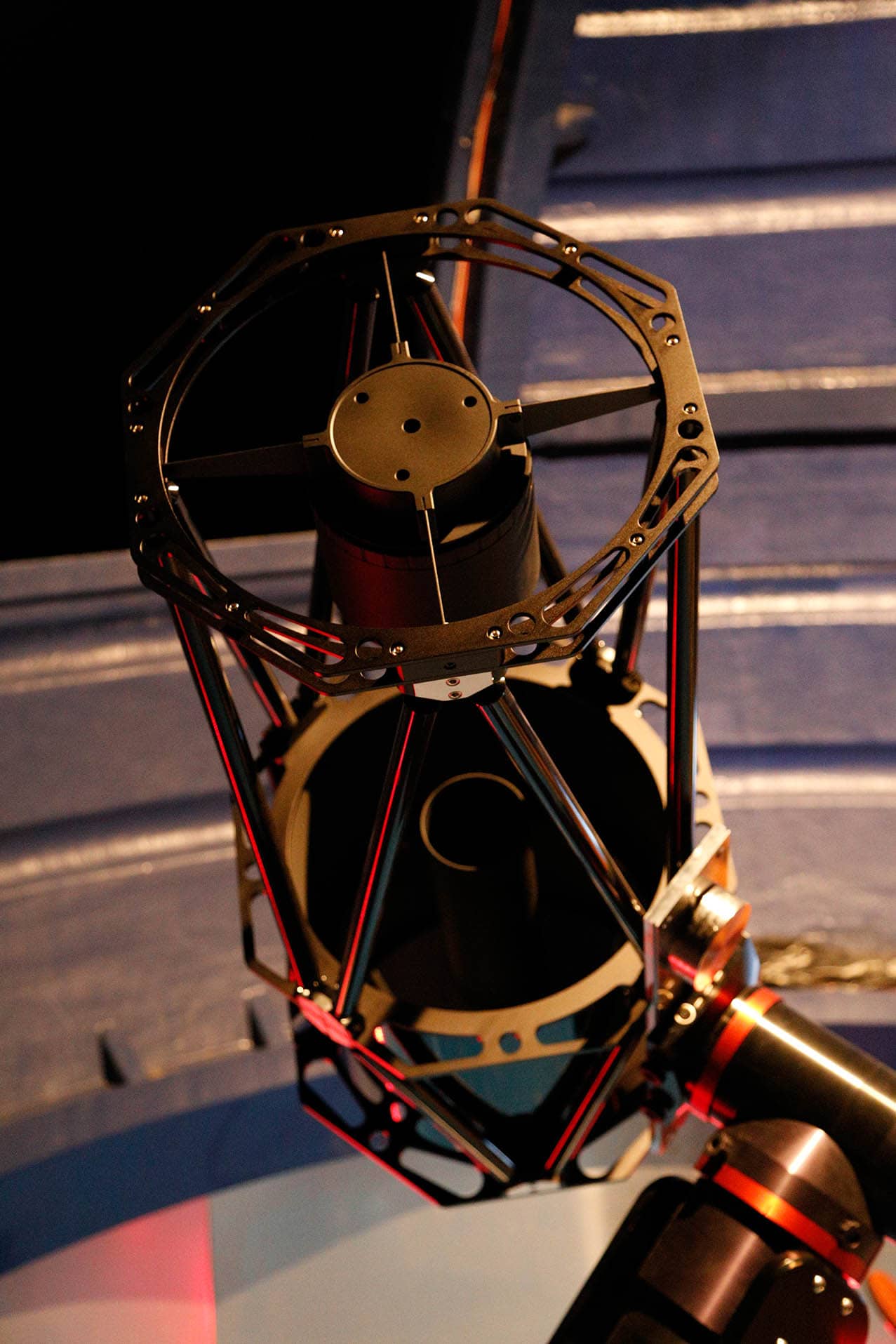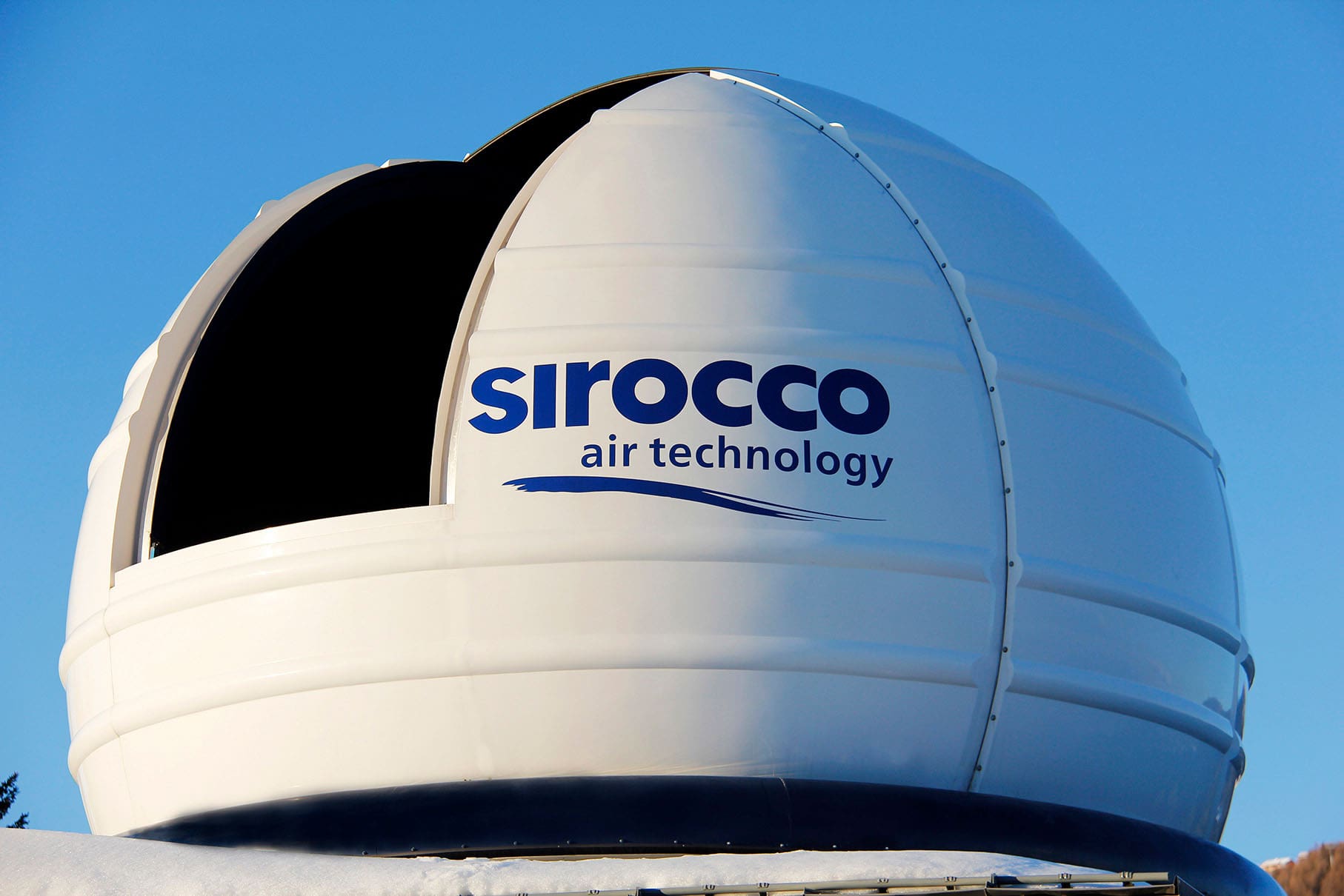Observatory - AMOS
For us, as astrophotographers, it is always interesting to see what equipment our colleagues are using. One of the first clicks on the various websites is, next to the gallery, the equipment. On this page, we would like to introduce you to our observatory from the technical side, telescope, mount, dome, camera, etc. everything that belongs to us.
What we want to make clear to beginners is that the most beautiful observatory and the most expensive equipment do not automatically make someone a good astrophotographer. Good equipment is an important basis, but without experience in how to get the best out of your equipment, even the most expensive telescope will only provide mediocre images. We are always fascinated by what astrophotographers make with the so-called "low budget equipment" and leave you speechless. Clean guiding and know-how in image processing are usually the keys to success.
Telescope | Telescope mount | CCD Camera | Filter | Focuser and Rotator | Dome | Dome Control | Software
Telescope
The heart of any observatory is usually the telescope. It collects the light and shows you the wonders of the universe, whether it is observed visually or photographically. Depending on the planned application, different telescope types are better or worse. A telescope that can do everything perfectly does not exist. We have chosen a 16" Ritchey-Chrétien reflector telescope as our main instrument. To photograph faint galaxies and nebulae, we need a lot of light and a long focal length to make details visible even in small objects.
The data at a glance
♦ Optical system Ritchey-Chrétien
♦ Aperture 16" / 406 mm
♦ Focal length 3250 mm
♦ Aperture ratio f/8
♦ Focuser TS 3 Zoll Rack and Pinion
Our main telescope is complemented by a TS Foto APO with 80mm aperture and a focal length of 544mm. This small telescope with its short focal length allows us to photograph large objects like the Andromeda Galaxy or the Orion Nebula without having to create a mosaic. The color purity and needle-fine stellar imaging make beautiful and razor-sharp images.
Telescope mount
A critical part, especially when photographing with long focal lengths, is the telescope mount. Even the smallest deviation will show up in the images if the mount does not track the telescope precisely to the object in the sky. For us, it was important to find a mount that can carry a weight of up to 100kg, has high rigidity, precise pointing, and tracking. We found the ideal solution for us in the ASA DDM 85XL, from the Austrian manufacturer Astrosysteme Austria. The mount is a direct drive mount and has high-resolution encoders on both axes. In combination with the control program Sequence and Autoslew, we can expose for 25 minutes without autoguider even at focal lengths of more than 4 meters. The system is also used in professional facilities like ESO.
Our telescope and the mount are not, as in most cases, mounted on a straight pillar but on a bend pier. This allows us to continuously track objects from horizon rise to horizon set without having to flip the mount at the meridian. This allows us to photograph objects at their ideal position in the night sky without having to flip and reorient the telescope, which does not waste time and eliminates a potential source of error. Another point is the remote controllability of the telescope via the Internet, which is also easily accomplished.
CCD Camera
Over the years we have photographed with all kinds of cameras from different manufacturers. From SBIG, Meade, over Starlight Instruments up to Canon DSLR cameras everything was possible.
Currently, our main camera is the ZWO ASI 1600MM Pro. The camera has a highly sensitive CMOS chip that delivers very good results even with very short exposure times. Price/performance is excellent with this camera and it beats the usual CCD cameras in the range.
Filter
Photography with black and white cameras requires the use of color filters to capture objects in color. The best experiences we have with filters from Astrodon .
The filters are a bit expensive, but if you want to get the most out of your photos, you won't get around them. Good alternatives are filters from Astronomik or Baader.
Focuser and Rotator
At the latest when the telescope is to make automated images, it is necessary to purchase a focuser that can focus independently on an object with the help of the camera. If the telescope is to be remotely controlled via the Internet, a rotator is also advantageous, which can rotate the camera if necessary and thus ideally adjust the image section.
We use an Integra 85 Camera Field Rotator and Focuser.
5.5 meter observatory dome
Our dome was tailor-made for our observatory and requirements. It is the result of cooperation with the dome manufacturer ScopeDome Scopedome who produced a 5.5 meter dome for the first time. The dome is therefore partly statically over-dimensioned to withstand high snow loads and, if necessary, extreme winds.
Dome data
♦ Diameter 5.5 meters
♦ Dome shutter width 1.7 meters
♦ Dome floor to zenith 5.76 meters
Dome Control
At this point a little teaser. We are currently working with a manufacturer who specializes in dome controls in the professional sector to enable an upgrade for the dome control.
More information about this in the course of the year, we will publish a detailed test report.
Software
A frequently asked question is also which software we use or which software we can recommend.
♦ The Sky X prof. (star chart, telescope control, camera control)
♦ Maxim DL 6 (Camera control)
♦ AutoSlew & Sequenz (ASA Mount Control Software)
♦ FireCapture (Planetary imaging)
♦ PixInsight (Astro Image editing)
♦ Stellarium (Star chart with telescope control)
♦ CCD Guide (Planning astrophotography sessions)
♦ Photoshop (Astro Image editing)


